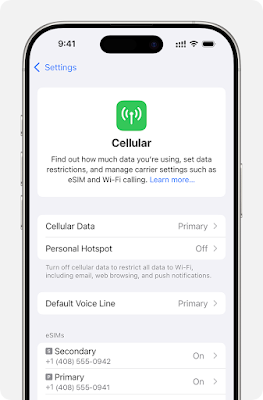Apple rolls out eSIM transfer support between iPhone and Android in iOS 26, eliminating the need to call your carrier. Discover how this new cross-platform feature works and what it means for mobile users.
Switching phones just got a lot easier. With the upcoming release of iOS 26, Apple is introducing one of the most user-requested features in recent years: cross-platform eSIM transfers. For the first time, users will be able to move their mobile number from an iPhone to an Android device without needing to contact their carrier or deal with QR codes. This small but powerful update is set to change how we switch between platforms.
In earlier versions of iOS, eSIM transfers were limited to iPhone-to-iPhone setups. That was helpful, but if you were switching to Android, things got complicated. You usually had to get in touch with your carrier, wait for a QR code, and go through a manual setup. With iOS 26, that entire process is now handled directly in the system settings. Some testers running iOS 26 have already seen a new “Transfer to Android” option in the cellular settings, giving us a sneak peek at the upcoming experience.
While the feature isn’t available for all mobile plans just yet, it already works with US Mobile’s Dark Star eSIM. That’s a promising sign for broader support when iOS 26 rolls out to the public. This update removes a major headache for users who often move between devices or test both operating systems.
This feature isn’t just an Apple initiative. Google has also been working behind the scenes. The Android 16 beta includes hints of a “Transfer from iPhone” feature, suggesting the two companies have collaborated to make this possible. On iPhones running iOS 26, users can now see a “Transfer From Android” option when setting up a new eSIM. The device then generates a QR code that an Android phone can scan to begin the transfer, completing the loop and allowing movement in both directions.
The ability to transfer an eSIM between iPhone and Android without needing a physical SIM or customer support call is a big deal. It opens the door for more flexible phone use, especially for people who want to try different platforms or need to switch phones for work or travel. It also signals a shift in how Apple sees its ecosystem—not just as a closed system, but as something that can work better with others when it helps the user.
Even though the feature is still in testing and limited to select eSIM providers, it’s clear this is just the beginning. As the iOS 26 update moves toward full release, more carriers are likely to adopt this method. What was once a frustrating task could soon become as simple as a few taps in settings.
With this step, Apple is helping make mobile connectivity smoother and more user-friendly. Whether you’re moving to Android, coming back to iPhone, or just exploring both platforms, iOS 26’s eSIM transfer support gives you the freedom to do it all—without the wait or the hassle.
What do you think about this? Check out the comments section.



Post a Comment
0Comments